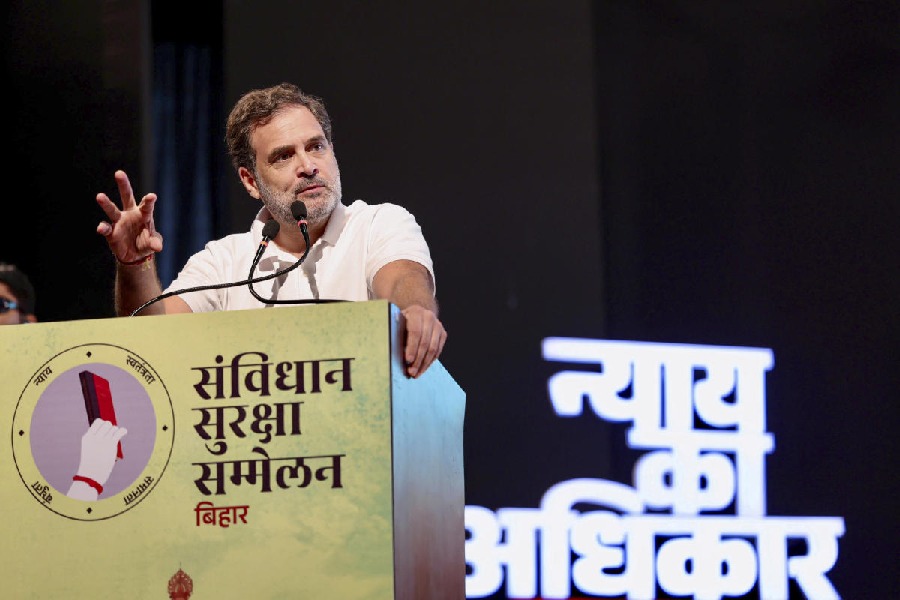 |
| Bhutias sell machine- made garments. Picture by Avijit Sarkar |
Siliguri, Jan. 5: As the winter chill descends from the hills to the plains, the Bhutias follow—with a plethora of sweaters and shawls to suit all shapes, sizes and tastes.
Though the winter cold has remained the same, the Bhutia market in Siliguri, where the hillfolk congregated with their hand-knit winter wear, is only a misty memory.
Displaced from the winter niche they had carved for themselves by the untiring machines in Ludhiana and Delhi, the only ones to continue the tradition of insulating the plainsmen are a lot baptised by science.
“Knitting, an art that took up most of a Bhutia woman’s waking hours, has lost popularity since the advent of machine made woollens.
“People no longer want the traditional hand-knit wear. They want fancy designs, at affordable prices even if it means compromising with quality,” said Thokcho Bhutia, an old timer in the profession, who has been coming every year from Darjeeling since 1970.“Our hand-work produces goods of better quality, but they cannot match the computerised designs and fancy materials, that one gets in ready-made wear.”
Thokcho said the quickest and nimblest of fingers takes a whole day to complete a pullover. “A machine spins out thousands in the same time,” he rued. “In an age where the younger generation lives in the fast lane, they do not understand the painstaking process of knitting an entire sweater.”
Ashok Chettri, who has been a regular seller at the market for over a decade said: “We keep some hand-knit children’s wear, but even that finds no takers.”
Nitesh Agarwal, a businessman dealing in hand-knit woollen acknowledges the damage the advent of machines has done to the Bhutia occupation.
“They have lost out on all counts. Raw wool yarn, once a much sought after commodity that made up for the bulk of their sales, has also come down drastically,” he said. “Every year our market is shrinking by about 40 per cent. The Bhutia market is known as a place where authentic woollen garments are available at cheap prices. That is the only thing that continues to draw people every winter.”
But those days are all but gone.
“Even though the Bhutia faces have remained unchanged over the decade, the market is no longer special, in that it sells what other markets do. If this continues, the permanent winter fixture for finding fine hand-woven winter wear, will soon be lost forever,” he said.










